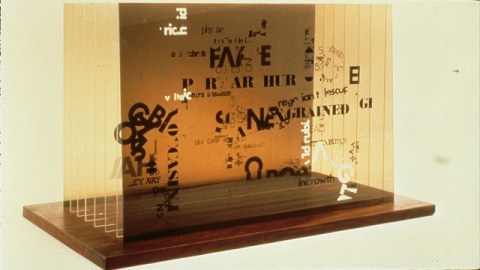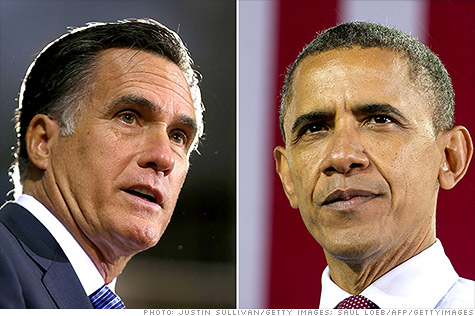How American Modern Art Still Dances Around Duchamp

It all started with a review. When a reviewer of a 1957 painting exhibition by Jasper Johns compared one of his paintings to a readymade by Marcel Duchamp, Johns and friend and fellow artist Robert Rauschenberg made the pilgrimage down from New York City to the Philadelphia Museum of Art, home since 1954 to not just Duchamp’s readymades, but also the painting known simply as The Bride and the monumental work known less simply as The Bride Stripped Bare by Her Bachelors, Even (The Large Glass). Inspired, Johns and Rauschenberg soon met Duchamp and struck up a friendship that would eventually include composer/visual artist John Cage and choreographer Merce Cunningham. In Dancing around the Bride: Cage, Cunningham, Johns, Rauschenberg, and Duchamp, which runs at the Philadelphia Museum of Artthrough January 21, 2013, you discover how these younger artists came to dance around the influential presence of Duchamp and create art in the same playful spirit as the arch-Dadaist. Perhaps the most difficult (yet most pleasurable once acquired) artist of the 20th century, Duchamp remains the inevitable influence for all American art ever since Johns and Rauschenberg made their trip.
Duchamp intimidates casual art lovers with his sheer intellectual power. Peer into The Large Glass as if it were a magic mirror doorway into the secret of modern art, and you’ll come away disappointed. But behind all the highbrow are hijinks of the highest order. The Duchamp who painted a mustache on the Mona Lisa and suggested she had a “hot ass,” the Duchamp who pulled a urinal off a men’s room wall and put it into a museum, and the Duchamp who claimed to have retired from art to play chess professionally only to pull one last posthumous (dirty?) “joke” in Etant donnés replaces the dour father figure of modern art. In Dancing around the Bride, you experience the warm, living, fun Duchamp who made devout friends rather than devout disciples.
PMA curator Carlos Basualdo organizes the exhibition into four separate, yet intersecting sections. “This exhibition is about the relationship between art and life,” Basualdo explains. “It tells the story of five extraordinary artists and what happened to art and culture when their lives and work intersected. Their mutual interactions redefined the language of contemporary art in the 1950s and 60s.” The first section, titled “The Bride” returns to that first face-to-face encounter of Johns and Rauschenberg with Duchamp’s work. A suite of eight untitled ink on plastic drawings from 1986 and Rauschenberg’s 1959 painting Bride’s Folly visually “dance” around Duchamp’s painting The Bride in joyous discovery.
The second section picks up the theme of chance, which is where Cage enters the fray. Although Cage rightfully earns credit as the father of chance-based music in his evocation of the I Ching, he acknowledged that Duchamp, an amateur composer, beat him to it by decades. “He used chance operations the year I was born,” Cage told an interviewer after discovering Duchamp’s Erratum Musical. A Yamaha Disklavier piano sends Cage’s music throughout the galleries—an eerie soundtrack to the dissonant images on the walls, including Cage and Duchamp’s unconventional sheet music that raise even musical notation to the state of modern art.
When you get to “The Main Stage” section, you find the fullness of Duchamp’s vision as enacted by this younger generation as collaborators. Stage sets created by Rauschenberg and Johns for the Merce Cunningham Dance Company fill the large room. Johns’ set designs for his 1968 collaboration with Cunningham, Walkaround Time directly refer to The Large Glass. Unfortunately, I wasn’t there when one of the many scheduled dance performances took place (and had to settle for watching Charles Atlas’ film version, on view in a separate gallery), but just walking around Johns’ designs felt like physically entering The Large Glass itself as another suitor in pursuit of the bride.
The final section centers on the game of chess both literally and metaphorically. Duchamp and his wife Teeny loved the game and often played it with Cage and others. (Cage later admitted that playing was just a pretext to spend more time with Marcel.) Duchamp’s travel-sized Pocket Chess Set sits beside an electronic chessboard similar to the one Cage and Duchamp played upon during Cage’s musical piece Reunion in 1968 just 6 months before Duchamp’s death. The rest of the works in this section (and pretty much every other work in the show) illustrate how Duchamp and friends played a multi-dimensional game of “chess” when it came to visual art, music, and even language.
Less than a year after Duchamp’s death, Cage created Plexigram I–IV from Not Wanting to Say Anything about Marcel (shown above), a series of eight silkscreened Plexiglas panels placed on a walnut base that Cage called a “Plexigram.” Cage’s Plexigram telegraphs a message to Duchamp in the great beyond by echoing Johns’ response to a reporter asking for a comment on Duchamp’s passing. Each plexiglass panel features fragmented words and images that allude to The Large Glass, of course, but also honor Duchamp’s role in American modern art. In American art “A.D.”, after Duchamp, “every word is in a state of disintegration,” Cage says, suggesting perhaps that Duchamp’s friends will go on nonetheless, reintegrating art and life, because that’s what he would have wanted.
The exhibition curators create multiple opportunities to integrate visually Duchamp and the other artists in a way true to the network of influence and response. Duchamp’s Fountain stands beside Johns’s Painted Bronze (Ale Cans) in a battle of the readymades. Rauschenberg’s 1963 painting Express features a woman walking in series among the buffet of images, but it is the not one, but two versions of Nude Descending a Staircase (both, as are many of the works on display, from the PMA’s massive Duchamp collection) flanking Rauschenberg’s painting that drive home the Duchamp connection. Johns and Rauschenberg already rank among the most important visual artists of American modernism, but what really stood out for me is Cage’s visual art. If you only know Cage for his infamous 4′33″, the musical composition in which musicians don’t play (the sheet music for which is in the exhibition), then it’s time to break the silence on how thoughtful and innovative a multimedia artist he really was. Cage: Beyond Silence, a festival celebrating the centennial of Cage’s birth, runs through January 20, 2013, with many events happening right there in the Dancing around the Bride space to help spread the word.
The curators arranged Dancing around the Bride in several places in the PMA, forcing you to walkabout the museum’s encyclopedic collection. As you move towards the d’Harnoncourt Gallery (named for the PMA’s late director and guiding spirit, Anne d’Harnoncourt), where The Large Glass, Etant donnés, and the rest of the museum’s Duchamps permanently reside, you can’t help but see all art through the lens of Duchamp. Even art not wanting to say anything about Duchamp suddenly says volumes. Right before you enter Dancing around the Bride annex area, you’ll notice Joseph Cornell’s Duchamp Dossier, a Cornell box of effects related to Cornell’s long friendship with the French master. The dossier stands as a love letter and a reminder of just how far and deep Duchamp’s kindly influence ranged. By the end, you may find yourself missing him, too.
All that prepares you for coming face to face with The Large Glass itself—the enigmatic, accidentally shattered masterpiece Duchamp claimed to be “definitively unfinished.” In Duchamp’s working notes to the piece, he expressed a desire “to reach the Impossibility of sufficient visual memory.” By the end of Dancing around the Bride: Cage, Cunningham, Johns, Rauschenberg, and Duchampyou, too, may reach an impossible level of sufficient visual memory, but once the overload passes and it all sinks in, you’ll recognize the playfulness beneath the often-perceived pretension and come to enjoy the “definitively unfinished” pleasures of the work itself and the ebullient multimedia collaboration between these artists. In many ways, this exhibition can be the gateway drug to the often foreboding, but rewardingly relevant world of contemporary art, whose fun and playfulness too often hide beneath the theory. Dancing around the Bride will shatter your previous trepidation about Duchamp and “difficult” art and having you dancing and singing and seeing along.
[Image:Not Wanting to Say Anything about Marcel, 1969. John Cage, American, 1912-1992. Plexigram (comprising eight silk screened plexiglas panels and one walnut base), 14 x 20 x 1/8 inches (35.6 x 50.8 x 0.3 cm; Base: 36 13/16 x 61 x 1 7/8 inches (93.5 x 154.9 x 4.8 cm). Philadelphia Museum of Art. © The John Cage Trust.]
[Many thanks to the Philadelphia Museum of Art for providing me with the image above from, a press pass to view, and other materials related to Dancing around the Bride: Cage, Cunningham, Johns, Rauschenberg, and Duchamp, which runs through January 21, 2013. Thefestival celebrating the centennial of John Cage’s birth, Cage: Beyond Silence, runs through January 20, 2013.]





